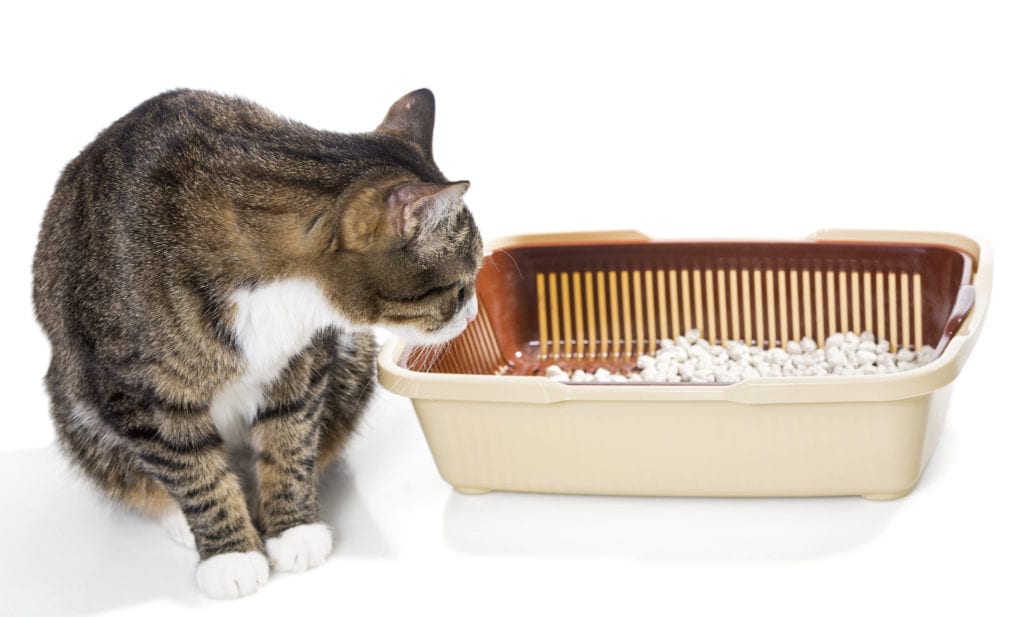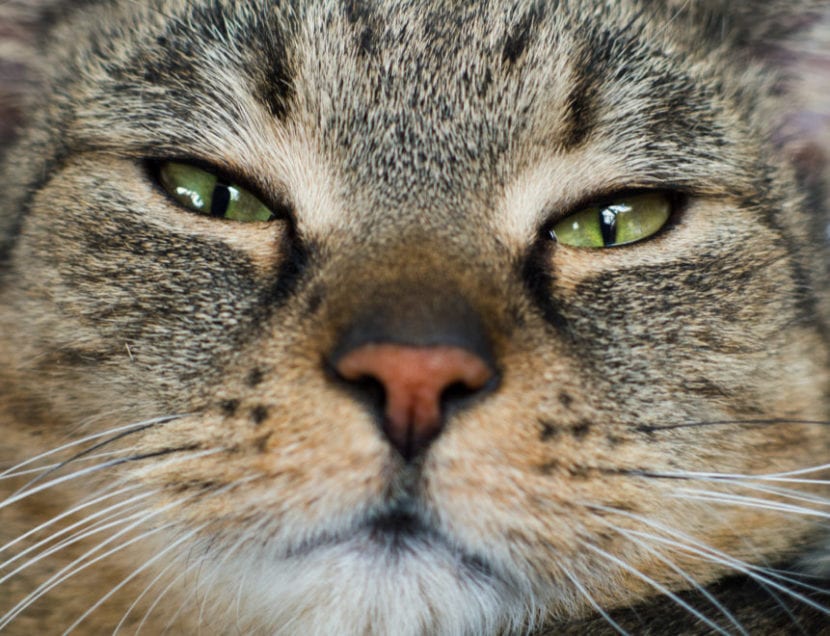
The cat urine crystals They are one of the most common causes of visits to the vet, not because of the crystals themselves, but because of the symptoms that accompany them and that humans do not like at all.
For this reason, we are going to tell you what makes the furry have stones or not, and what to do so they can recover.
Why are they formed?
The formation of stones or stones, known by the name of urolithiasis, occurs when minerals in urine bind to each other. But why? For this, it is necessary to know that in the urine there is a variable concentration of electrolytes, which can have a positive or negative charge, which is what makes them have a tendency to join (opposite charges attract each other, like two magnets).
In addition, it also has a pH that can be more acidic or more alkaline depending on many factors such as diet, medications or infections.
What are the symptoms?
The symptom that we will see in cats are:
- Urine with blood
- Difficulty urinating, with pain and / or discomfort
- He urinates little, but he goes to the sandbox a lot
- Frequent licking of the genital area
- Starts urinating out of the litter box
- Is irritable
- And in very serious cases, the cat stops urinating
Once our furry have any of these symptoms, especially the last one, we must urgently take them to the vet.
How is it diagnosed?
The vet will give them a physical exam and ask us a series of questions to get an idea of what may be happening to them (whether they drink or not, how often they go to the sandbox, whether they have lost their appetite, etc.). Then, they will do a urine analysis, for this we will have to have taken a sample before going to the consultation with a plastic syringe without a needle.
In the sample, if they are confirmed to have crystalsYou will see that these are of any of these three types:
- Struvite crystals: they are formed when the diet is very high in magnesium, phosphorus, calcium, chlorine and fiber, and when it is low in fat.
- Calcium oxalate: they are formed when they are fed with low-quality commercial feed, which contains cereals, which are ingredients that cats cannot digest well (remember that they are carnivores, not herbivores).
- Urate or uric acid crystals: they are formed when they are given a diet whose food base is the viscera, like the liver. It is the least frequent type.
How are they treated?
It will depend on the case: if they are very serious, they will need fluid therapies to keep them hydrated, in addition to extracting their urine through a catheter. But if the animals continue to go to the litter box and relieve themselves and what happens is that they have less severe symptoms, with a change in diet recommended by the veterinarian they will recover.

Has this post been useful to you?
Hi! Thanks for your interesting article. My cat has struvite crystals and the vet gave me an antibiotic and an anti-inflammatory. In addition, I always give him a feed and urinary veterinary food. I have finished the veterinary treatment, but every time I use the litter box, it keeps getting wet with urine with a very unpleasant smell. What could I do?
Thank you for your help.